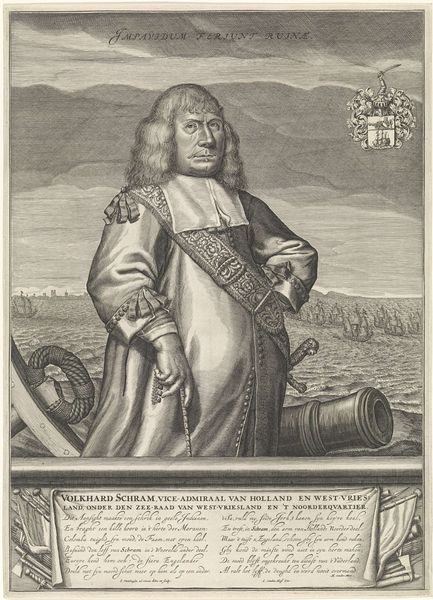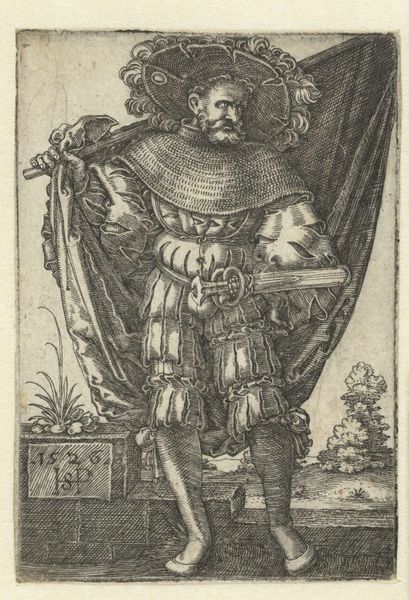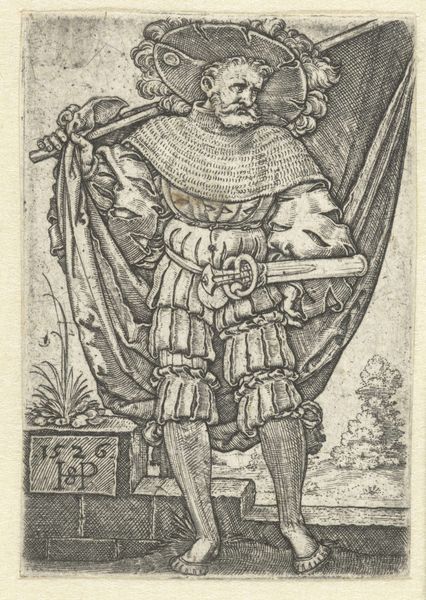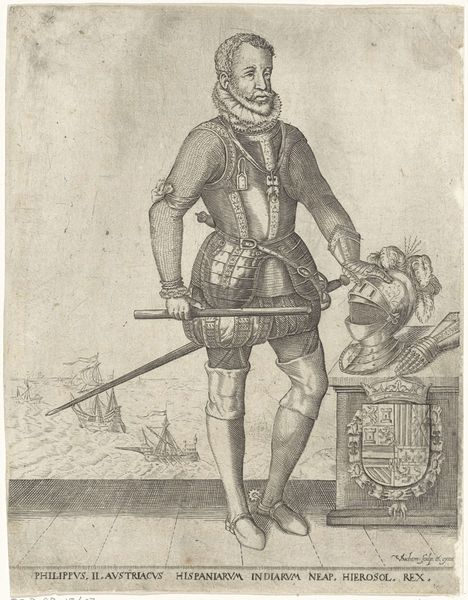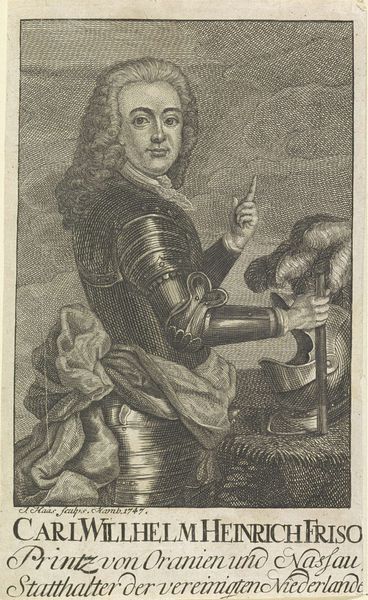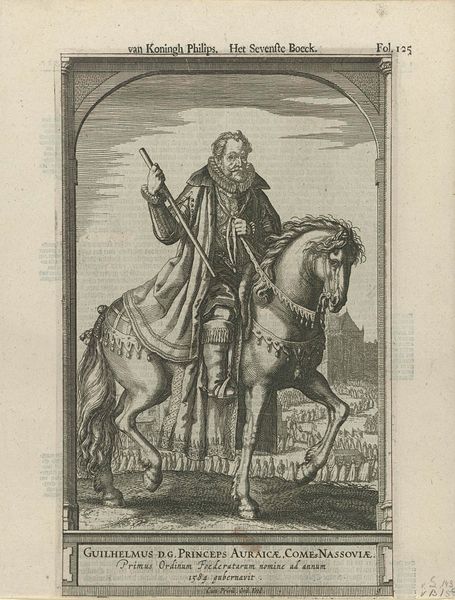
engraving
#
portrait
#
baroque
#
dutch-golden-age
#
old engraving style
#
figuration
#
history-painting
#
engraving
Dimensions: height 442 mm, width 334 mm
Copyright: Rijks Museum: Open Domain
Editor: Here we have Jean Henri van Schawberg's "Portret van Willem IV, prins van Oranje-Nassau", an engraving made sometime between 1747 and 1760. It's quite striking, how he's posed in armour, but with this powdered wig. What strikes you most about this piece? Curator: What immediately grabs my attention is how this image embodies the complex power dynamics of the time. He's portrayed as a military leader, referencing Dutch power. But let's consider: what does this carefully constructed image tell us about his role and the social unrest brewing beneath the surface? How might the use of engraving as a medium further solidify his position and control the narrative being presented? Editor: I hadn't considered the engraving technique as a tool for control. I was just thinking about it as a way to reproduce images. Curator: Precisely! This wasn’t just about reproduction. Engraving, with its detail and permanence, lends itself to constructing a specific kind of visual authority, doesn't it? What aspects of his dress and posture, for instance, reinforce ideas about masculinity, leadership and power in the context of 18th century Dutch society? Editor: Well, the armor clearly signals strength, but also maybe tradition? And the baton… I guess that represents authority. But it all feels a bit staged, almost like propaganda. Curator: Exactly! It is carefully constructed, but perhaps also revealing of the anxieties surrounding power at the time. Consider the political and economic factors influencing the United Provinces during Willem IV’s reign. How does the imagery respond to rising social inequalities? Editor: So, it's not just a portrait of a prince; it's a statement about power, control, and anxieties during a specific moment in Dutch history. Curator: Absolutely! It invites us to investigate the societal forces shaping not only his identity, but also the function and interpretation of visual culture. It's an invitation to deconstruct the visual rhetoric of power. Editor: I’ll definitely look at these portraits with new eyes. There’s so much more going on beneath the surface than I ever realised!
Comments
No comments
Be the first to comment and join the conversation on the ultimate creative platform.
